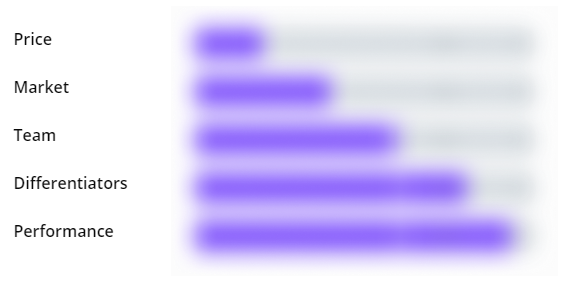MIME
Tool to increase conversions and reduce returns for the beauty industry
Overview
Raised: $0
Rolling Commitments ($USD)
03/13/2021
$0
2016
Beauty & Personal Care
FashionTech
B2B
High
Low
Summary Profit and Loss Statement
| Most Recent Year | Prior Year | |
|---|---|---|
|
Revenue |
$0 |
$0 |
|
COGS |
$0 |
$0 |
|
Tax |
$0 |
$0 |
| ||
| ||
|
Net Income |
$-159,640 |
$-34,959 |
Summary Balance Sheet
| Most Recent Year | Prior Year | |
|---|---|---|
|
Cash |
$223,646 |
$165,304 |
|
Accounts Receivable |
$0 |
$0 |
|
Total Assets |
$418,065 |
$183,215 |
|
Short-Term Debt |
$316,949 |
$67,459 |
|
Long-Term Debt |
$345,000 |
$200,000 |
|
Total Liabilities |
$661,949 |
$267,459 |
Upgrade to gain access
-
$25 /month
billed annually - Free portfolio tracking, data-driven ratings, AI analysis and reports
- Plan Includes:
- Everything in Free, plus
- Company specific
KingsCrowd ratings and analyst reports
- Deal explorer and side-by-side comparison
- Startup exit and failure tracking
- Startup market filters and historical industry data
- Advanced company search ( with ratings)
- Get Edge Annual
Edge
Synopsis
Makeup has been used for millennia, and many women’s daily rituals include applying some sort of cosmetic. While the number of women who use makeup regularly might be lower than you think (only 28% of women say they wear makeup most days according to one study), tens of millions of women use cosmetics regularly. The global makeup market was valued at almost $300 billion in 2018.
The market for “makeup base” — the skin products like concealer and foundation that apply the base layer for makeup application — is worth $12 billion. Foundation composes the largest segment of this market. The world of foundation has received increased awareness in recent years, particularly with the introduction of Rihanna’s FENTY brand. The FENTY line of foundations served an expanded selection of skin tones, promising better inclusion for women of color traditionally excluded from mainstream makeup lines.
While FENTY foundations made great strides toward the availability of foundation for all women, it didn’t solve one crucial problem — finding which shade of foundation matches your skin tone, particularly among a newly-expanded set of options. More than 50% of women report having bought more than one tone of foundation because they were unsure which shade was right for their skin.
MIME offers AI-powered technology to match a consumer’s skin tone with an available shade of foundation. MIME is a B2B company that partners with cosmetics companies to offer shade matching functionality through their existing websites and marketing channels. The company also aggregates data from each of these matches and sells that information to data partners like LiveRamp.
MIME’s current SeedInvest raise has been rated a Neutral Deal by the KingsCrowd investment team.
Price
MIME is raising a convertible note at a $7 million valuation with 20% conversion discount. This valuation is a mixed bag for investors. On one hand, MIME only began generating revenue in 2020, and 2020 financial data isn’t available to review yet. Therefore, it’s difficult to compare this valuation against the company’s current progress. On the other hand, MIME seems to be a technologically-advanced product that has won interest from leading beauty brands, including AVON South Africa. MIME will likely pursue a patent on this AI-backed software, which would tremendously increase the company’s value to potential acquirers. Thanks to those dueling considerations, MIME’s price rating is middle-of-the-road.
Market
MIME is attacking a lucrative global makeup market (worth over $300 billion). However, MIME’s current product is only tailored to foundation, which — at around a $5 billion market size — represents a much smaller segment. And, of course, these consumer revenue metrics are not an accurate representation of MIME’s revenue potential. The company does not sell makeup to consumers, but rather engages with cosmetics companies in SaaS contracts. Therefore, MIME’s revenue potential is limited to a small percentage of the overall foundation market. As a result, MIME’s market rating is relatively low.
Team
MIME was founded by Christopher Merkle, reportedly a “technical founder with 13 years of experience in architecting and delivering digital products to millions of people globally.” However, a closer look at Merkle’s background muddles that summary. After his graduation from Georgia State University, Merkle appears to have spent the last 10 years founding various companies. Merkle’s longest-term venture appears to be a digital services agency. Other projects include a retail think-tank and venture capital fund. Merkle does not appear to work full-time on MIME, as he lists present involvement with these other projects on his LinkedIn.
Beyond Merkle, MIME is staffed by three other people. Rafael Toledo is a data scientist with roughly five years of experience. Anisha Matharu manages MIME’s partnerships while also founding her own very similar company called swatchcandy. Lastly, Qiulin Chen is listed as MIME’s Lead Color Scientist but seems to have been merely a PhD intern for the company.
Overall, MIME’s team does seem reasonably experienced in entrepreneurship, data, and cosmetics, but there are many unanswered questions. How is Matharu’s company, which also matches users’ skin tone to makeup products, related to MIME? Does MIME’s CEO work full-time on the business? Due to these uncertainties and Merkle’s split priorities, MIME’s team rating is relatively low.
Differentiators
The cosmetics industry has no shortage of complexion-matching concepts. Kokko and Slapp are two makeup-matching apps that appear in top search results. Many leading beauty brands — like COVERGIRL and Rimmel — also advertise their own color-matching software (it’s unclear whether this technology is owned by those brands, or whether they are leveraging software from a vendor that is competitive to MIME).
Upon brief review, it’s difficult to differentiate MIME’s consumer interface from all of these makeup matching technologies. However, it does appear that MIME’s business model is a bit more sophisticated than competitors. Rather than targeting consumers or focusing solely on B2B SaaS revenue, MIME plans to partner with cosmetics brands for monthly recurring revenue or per-sale commission and sell data to companies like LiveRamp or Snowflake. This unlocks an intriguing new lane of business that separates MIME from its competition. Therefore, MIME’s differentiation rating is its highest.
Performance
MIME’s financial performance is difficult to fully assess, as the company has not yet shared 2020 financial data. In 2018 and 2019, MIME did not generate revenue, though losses were relatively low given typical costs to develop a high-tech product. The company lost $35,000 and $160,000 in 2018 and 2019 respectively.
Beyond financials, the performance of MIME’s product has been strong thus far. The MIME shade finder technology achieved a 70% shade satisfaction rate in customer surveys. Perhaps more importantly, MIME increased the purchase conversion rate by 5x when it was implemented on a leading online beauty retailer’s foundation pages.
It is difficult to get a full picture of MIME’s overall health, but simultaneously, the company’s product seems to perform as promised. Therefore, MIME’s performance rating is middle-of-the-road.
Bearish Outlook
MIME’s core product seems to be performing well in initial testing. However, investors should note several key questions that are unanswered in MIME’s raise materials. First, the structure of MIME’s team is somewhat unclear. CEO Christopher Merkle seems to be working on several projects simultaneously and doesn’t seem to have a strong track record of entrepreneurial success. Another team member is the co-founder of a strangely similar company, and a teammate purported to be MIME’s lead color scientist (presumably an important role for an AI-powered color matching company) was in fact a short-term intern. In addition, MIME’s 2020 financial data has not yet been released. Those figures are important, as 2020 was reportedly the first year that MIME generated revenue.
Given these questions, it seems that MIME’s biggest risk is a lack of focus from leadership, and potentially difficulties monetizing the product. MIME seems to have a well-differentiated plan to generate revenue from both cosmetics company software partnerships and data licensing, but the true potential of those plans is difficult to determine without data about MIME’s success in the market.
Bullish Outlook
Despite some questions about MIME’s team structure and recent financial performance, the company’s product does seem to fundamentally work. MIME has successfully partnered with AVON — albeit only in South Africa — and has strong data to demonstrate both consumer satisfaction with shade matching and a meaningful improvement in clients’ sales conversion rate.
In addition, there are favorable tailwinds in the makeup industry. Brands are offering more and more foundation tones to (finally) match the world’s diversity of skin colors, which only makes it more difficult for consumers to select their perfect shade. It’s even tricker to select a shade when shopping online, and e-commerce is getting closer and closer to overtaking physical retail (even further accelerated thanks to COVID-19).
Between these positive early signals and a landscape of favorable industry trends, MIME may be well-positioned to capture diverse streams of revenue, potentially expand the applications of its color-matching technology in the future, and serve as a lucrative vehicle of returns for investors.
Executive Summary
MIME is an AI-backed skin tone matching technology that plugs into cosmetics brands’ e-commerce sites, helping consumers select the perfect shade of foundation to match their skin tone. The product meets an important need for consumers, particularly given an increase in available foundation shades and the boom in e-commerce. Early results show that both consumers and retail partners are pleased with the technology.
On the other hand, MIME’s team doesn’t seem to be focused solely on this company, and investors can’t assess MIME’s 2020 financial data. There is also significant competition in the skin-tone-matching space, and it’s too soon to say whether MIME’s intent to sell data as an additional stream of revenue will allow it to emerge from the pack. Therefore, MIME has been rated a Neutral Deal.
For questions regarding the KingsCrowd staff pick or ratings for this company, please reach out to support@kingscrowd.com.
Analysis written by Katy Dolan.


